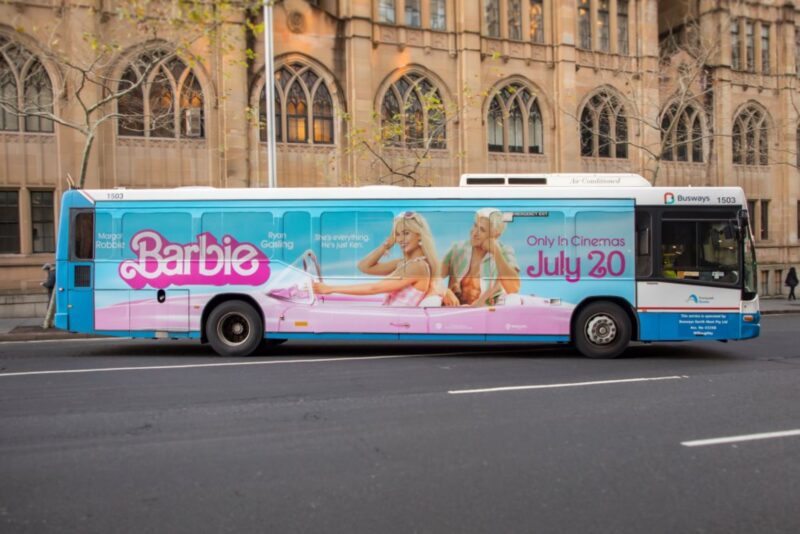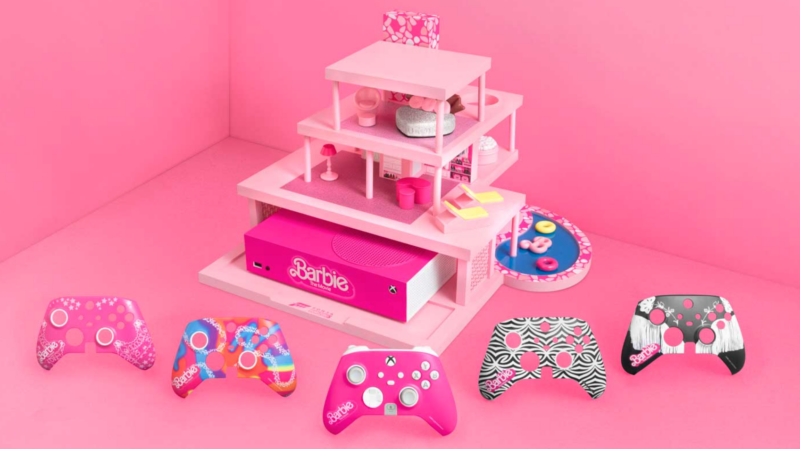Come on Barbie, let’s go partnering! But, don’t be a Ken in a Barbie World
Whether you’re looking to collaborate with Barbie, or collaborate elsewhere, what can be done to help your brand’s chances at success? Is this type of collaboration even worthwhile for brands, or does it only benefit Barbie?
Barbie: The Movie is one of this year’s biggest films. With the film’s arrival, it seems more and more brands are living in Barbie’s Dreamhouse.
Brands from a huge range of categories are jumping at the opportunity to say, ‘Hi Barbie!’, with brand collaborations from Chatime to Glasshouse, Airbnb and Xbox. However, finding the sweet spot where both brands benefit can be difficult. Whether you’re looking to collaborate with Barbie, or collaborate elsewhere, what can be done to help your brand’s chances at success? Is this type of collaboration even worthwhile for brands, or does it only benefit Barbie?

A reason you might be thinking of partnering with Barbie (or another collaborator) is the potential to be seen by a new audience. However, research from Dr Cathy Nguyen, at the Ehrenberg-Bass Institute suggests this may not be the most effective strategy.
Findings show that the addition of a second brand in advertising does not increase viewer attention. Looking at results by brand users, for ads that contained two brands, users of both brands give greater attention, whereas for users of only one brand, attention is negatively affected.
This means viewers who only use your brand or your collaborator’s brand have a lower likelihood to remember the advertising than if they saw an ad for either brand alone. Therefore, if you’re looking to gain attention in your collaboration, your best bet is to partner with a brand which you have higher brand user overlap with.
Your collaboration has the potential to build memories for your own brand, but it can also build memories for the brand you have partnered with. Advertisements are already prone to confusion with many ads linked to the wrong brand. Where many brands are
collaborating with one particular brand, you’re also competing for attention with these brands that are outside of your category. So even if your collaboration is well branded, is it good enough to cut through your collaborative partner’s branding and be beneficial for you?

The Ehrenberg-Bass Institute’s research shows that recall of both brands is unlikely, even when the brands are given equal prominence of their logos in an advertisement. However, brand recall is higher when the advertising creative aligns with the brand’s own context. For example, for the NYX and Barbie collaboration, advertising creative which more heavily incorporates the makeup products, or the makeup applied on people, will be more beneficial for NYX’s brand recall.
The branding and brand elements in your advertisement matter.
Firstly, ensure your branding and brand name are present. While it may seem obvious, it’s easy to get carried away daydreaming about Barbie and forget this advertisement is actually for your brand as well (frighteningly, we’ve seen some ads where Barbie is the only brand name that can be seen!).
Brand elements including logo, colour, characters and taglines are important as they help consumers recognise your brand in advertising. But they aren’t learnt overnight, they’re taught to consumers through years of investment and repeated exposure. Think Barbie and pink for example. Or consider McDonald’s golden arches which have been used consistently for decades. Seeing these golden arches in an advertisement would say it’s McDonalds even without seeing of hearing the brand name.

The best outcome for a brand in a collaboration is to incorporate as many of your own branding elements and category signals as possible. Your brand should share the spotlight, rather than be overshadowed by your collaboration partner. Don’t be a Ken in a Barbie World. Place your branding elements front and centre – make it clear it’s your brand consumers are purchasing the product from, then think of creative ways to bring in your collaboration partner. At the end of the day, you should be doing your best so that the collaboration is building memories for your brand in your category, as well as your partner’s. Changing, adapting or removing these brand elements, even for a short-term collaboration, can be harmful to brand recognition.
You want to gain attention for your brand through these collaborations, not be lost in a sea of pink and glitter.
So instead, focus on what makes your brand distinctive and noticeable. A well done collaboration can improve your brand’s chance of standing out and grabbing audience attention. So, by all means, jump in Barbie’s Corvette but make sure the end destination doesn’t compromise your brand.
Alicia Grasby and Chandler Meakins are marketing scientists at the Ehrenberg-Bass Institute for Marketing Science, the world’s largest centre for research into marketing. Find more information about Ehrenberg-Bass here.

Collaborations are very exciting, good to hear these thoughts on effectiveness
User ID not verified.
Have your say